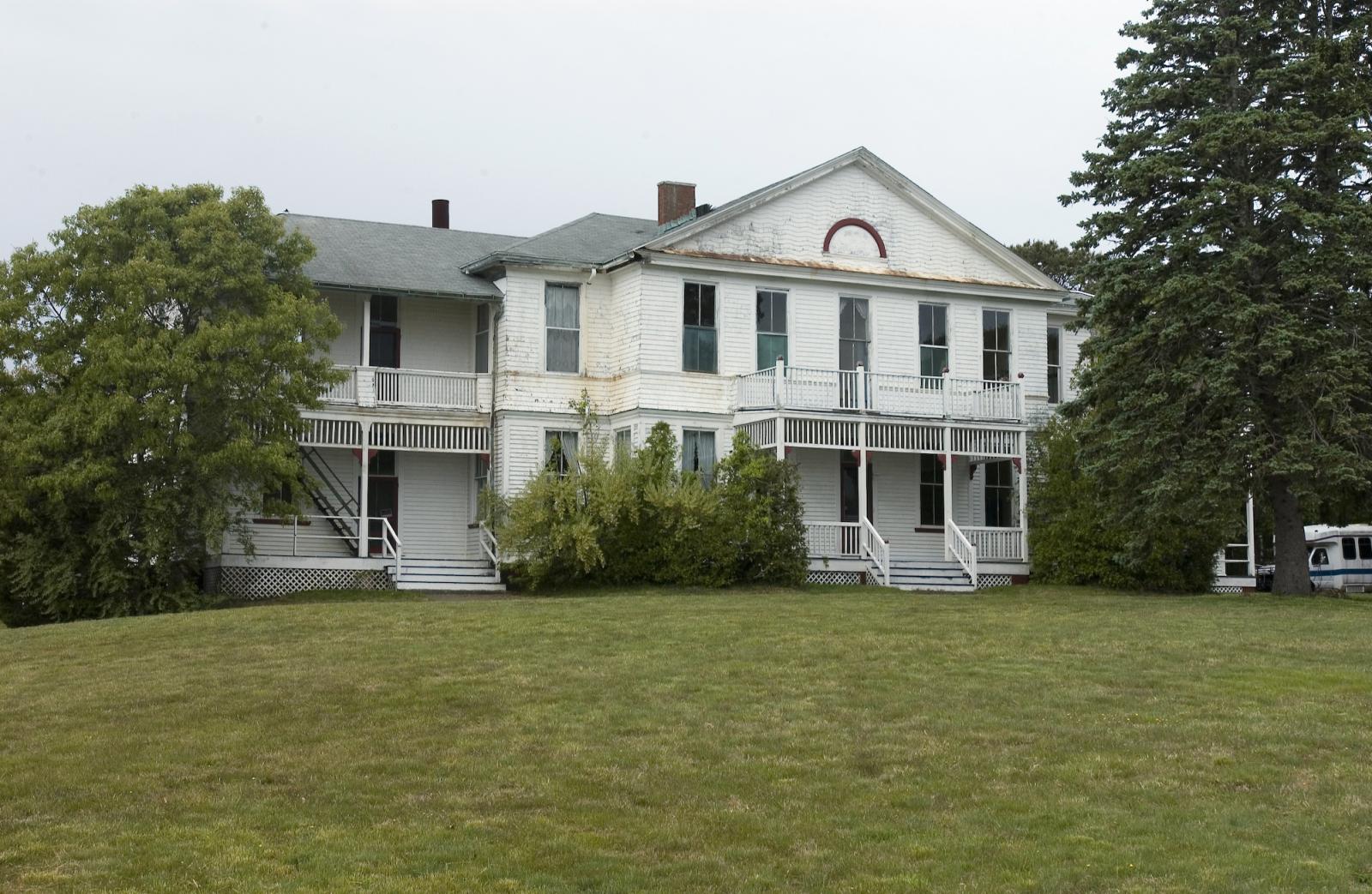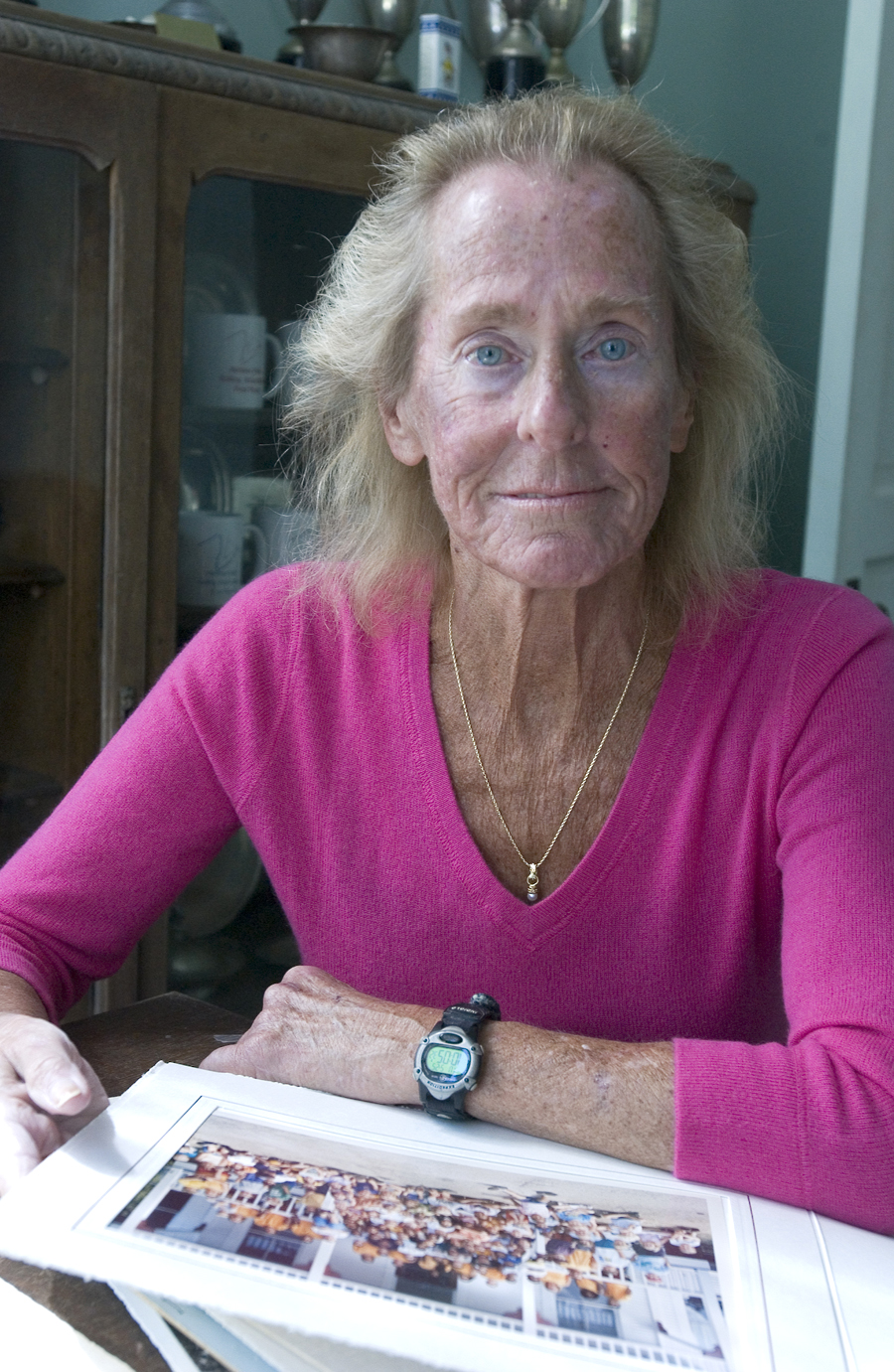An important piece of Island history is for sale.
The old Marine Hospital in Vineyard Haven has been placed on the market by the St. Pierre family, which has owned the property since the 1950s.
Built on a hill overlooking the Vineyard Haven waterfront in 1895, the hospital treated soldiers and sailors and their families, in peacetime and through two world wars. From the late 1950s until two years ago, the property has housed a summer camp for children.
“I feel that I have been lucky to be the guardian of the property and all that it means for the last 50 years. I think it is a special place,” said owner Barbara St. Pierre in a recent interview.
Originally built by the government, the wood clapboard building had a brick addition put on in 1938. The building is over 10,000 square feet and has 29 rooms. In the early 1900s the 30-bed hospital was considered state of the art for its day, and it housed among other things the Island’s first X-ray machine and possibly the first elevator. Wounded soldiers and sailors were sent there for treatment in World War I and World War II.
Decades ago when the Island had far less tree cover than it does today, the hospital was a visible presence in the town skyline. Today drivers on the Lagoon Pond Road cannot see it, although the four-acre property itself has sweeping views of the Vineyard Haven harbor and frontage on the Lagoon Pond.
With its broad porches and balconies, the former hospital evokes an era of solid, handsome buildings that were designed with large, rectangular spaces, high ceilings, wide hallways, decorative moldings and doorways with transom lights overhead. All these features have been preserved by the St. Pierre family through the years.
The St. Pierres bought the property in 1959.
Barbara St. Pierre has a folder full of Vineyard Gazette articles on the life of the building spanning 115 years. According to reports, the hospital first offered X-rays in 1901, and was lit by kerosene and gas until 1911. In 1951 the Gazette reported that Dr. James A. Hunter, a surgeon in charge, gave a talk to a community group about a partnership between the Martha’s Vineyard Hospital and the government-run marine hospital. “This 30-bed hospital, equipped for almost any emergency, employing 28 on its staff, and with a payroll which will exceed $101,000 this year, works with the Martha’s Vineyard Hospital as a unit of a team and is available in any emergency which may befall an individual or the community at large,” the story reported.
Changes in the way the U.S Public Health Service did business across the country, a drop in vessel traffic in Vineyard waters, the building of the Cape Cod Canal, and the way the U.S. Coast Guard rescued sailors were all factors that eventually led to the closing of the hospital on April 1, 1952. There was an outcry in the Vineyard community at the time. The Boston Seaman’s Friend Society was reported to have had an interest, but nothing ever came of it.
Two years later, the building was offered to the town of Tisbury for a dollar. There was talk that the building would become a public school, but it proved to be only a rumor.
In 1959, the Gazette reported that the Tisbury police had an interest in the building.
Finally in June of 1959, J. Raoul (Bud) and Dorothy St. Pierre, Barbara St. Pierre’s parents, bought the building that had been vacant for seven years. The St. Pierres had run a summer camp off Main street in Vineyard Haven for 20 years, so it followed naturally that they would turn the building into a summer camp.
Robert Kinnecom, 79, of Oak Bluffs, has memories of visiting the hospital, which cared for many Coast Guardsmen and their families. “At 13 years of age I had my tonsils out there. When I was 16 years old, I had a burst appendix. I remember the doctors meeting me right there at the door. I was in there for 10 days,” he recalled. His father was the chief surfman at the Gay Head Coast Guard Station. Years later, when Mr. Kinnecom was 20 and working at the Gay Head Coast Guard Station, he went to the hospital for treatment of a severe hand injury.
“The food was good and the doctors and nurses were wonderful. I remember riding the elevator. When they closed the place up, I felt bad,” Mr. Kinnecom said.
Barbara St. Pierre said she was 14 years old when her parents moved the camp to the marine hospital. She remembers walking the halls and playing in the rooms that were once hospital wards, and feeling the sun on her face when seated on the balcony with her parents and campers in the early morning light.
She said the family never used the elevator, out of concern for safety. “When my parents moved in, they unplugged the elevator,” she said. Today, what was once the operating room is Ms. St. Pierre’s bedroom. The entire 1938 addition serves as her private residence, while the rest of the building has been used for the summer camp.
Until 1977, it was an overnight camp. After that it became a day camp, primarily aimed at Island children whose parents worked in the summer and needed affordable child care. All told, the camp operated for 70 years, which translates to four generations of children who made crafts, did archery, badminton and tennis and learned to swim and sail on the Lagoon Pond under the supervision of their counselors.
Barbara St. Pierre took over the running of the camp from her parents, eventually with the help of her two daughters, Grace Hotchkiss Scarano, who now lives in Maryland, and Emily Coggins, who lives in Vineyard Haven.
The camp closed two years ago amid falling enrollment and a changing Island with many more summer programs for children.
And then a year ago the family decided to sell.
Ms. St. Pierre selected Karl Buder, a real estate broker and longtime business colleague who works with Coldwell Banker Landmarks Real Estate in Vineyard Haven, to list the unique old property. Mr. Buder and his wife also own the Thorncroft Inn in Vineyard Haven.
The asking price is $3.19 million; the property officially went on the market two months ago.
Ms. St. Pierre can picture the property becoming a private estate, or perhaps being used for elderly housing. She fervently hopes that whoever owns it next will honor its history and its many stories. Mr. Buder agreed
“You can’t help but walk through and hear the voices of the past in this place,” he said.
For more information about the property, Mr. Buder can be reached at 508-693-6866.








Comments
Comment policy »